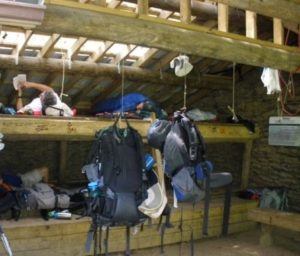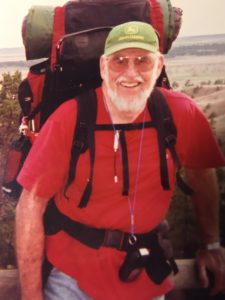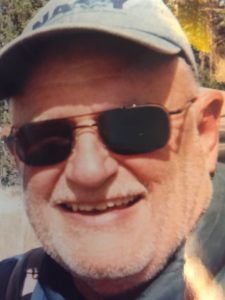The woman who showed up at our Appalachian Trail shelter just before sundown was dead serious about leaving right away and hiking 10.6 miles, in the dark, back to Clingmans Dome.
She and her family –husband, father, and three young children– had unwittingly hiked the wrong way, south from Clingmans Dome when they meant to go north.
They were day hikers so they weren’t carrying tents or sleeping bags. Except for water bottles, which we had refilled, they weren’t carrying anything, including flashlights.

While her husband and her father stood there with their mouths shut, she decided the family would retrace its steps and walk back to Clingman’s Dome. Think about that for a second: three tired, out-of-shape, adults [including a grandfather], attempting a 10-mile hike on the Appalachian Trial at night without flashlights, with three tired children in tow.
She couldn’t be serious. But she was.
When my three friends [Lynn Muchmore, Mark Ogden and Tony Goldman] and I realized that she had made up her mind we gave her two headlamps and a lot of trail mix. But we continued to urge her to leave the kids at the shelter, a girl about 12 and two slightly younger boys. Let them walk out tomorrow, when it was light. She finally agreed. Her husband would stay with children, she said, and she and her Dad would hike back to Clingman’s Dome.
When she said she would leave her husband with the children, he went berserk, and that’s the right word, berserk. He took off running up the trail, north toward Clingman’s Dome, yelling, “No, I’m going! I’m going!” I had never seen a man act like that. She should have fired him on the spot.
But his bizzarre reaction didn’t seem to upset her. She just told her father to stay with the children and then she left to catch up with her husband.
That night a good time was had by all, all of us, at least. We built a fire. The kids played until dark, ate a good supper, and slept warm in borrowed sleeping bags. After breakfast, the old man, he was in his 60’s, and the children started walking north. My friends and I continued our hike, south toward Fontana Dam.
We didn’t hike far that day, just 9.2 miles, and that night a fellow caught up with us who knew the rest of the story. He had sheltered the night before at Silers Bald, 5.8 miles north of Derrick Knob Shelter, where we had met the lost family.
About midnight, he said, the woman and her husband stumbled into Silers Bald Shelter almost hysterical. They had been terrified by noises in the woods, hidden from their their small beams of light. Bears? Boars? Or just their imagination?
Backpackers at Silers Bald Shelter fed them and put them up for the night and, after breakfast the next morning, the woman and her husband left.
My question for you is this: Did they hike south, to make sure their children were OK, or north, the shortest route back to Clingmans Dome.
You know the answer, don’t you.
Coming Monday: The “Good Guy” Debt Collector

